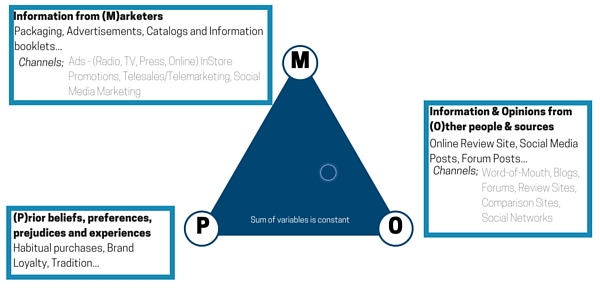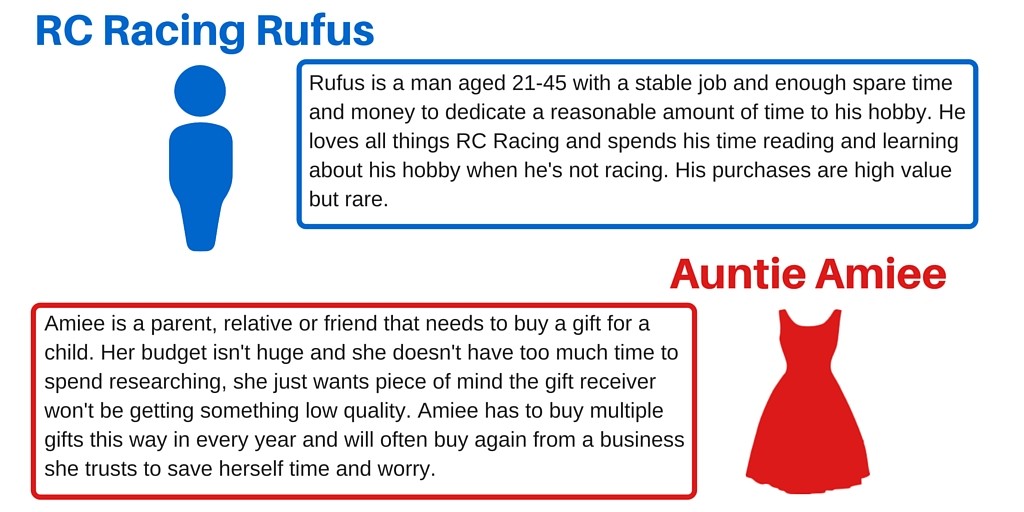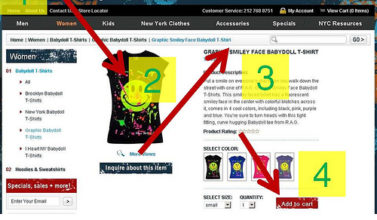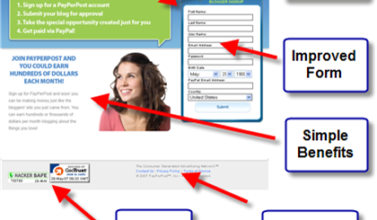
1. Who wants to know how much an online review is worth?
The power of social sharing and online reviews has been highly disruptive to the practice of reputation management. Access to a huge amount of information, opinions and experiences is at the fingertips of anyone with an internet connection. Both solicited and unsolicited feedback now finds a huge audience. The changing nature of reviews as they’ve moved online has required us to step back and re-evaluate what we know about our customers.
This article has a lot packed into it! We’ve added the navigation below to make it easier to jump to the bit you want to re-read or share.
Part 2. What Affects The Reviewer & Their Review?
Part 3. What Affects The Value (Perceived and Measured) of an Individual Review?
Part 4. What Can You Do To Maximise Review Value?
Part 5. Unquantifiable Value
Part 6. Number Recap & Value Findings
Part 7. Key Points To Take Away
In the past if you wanted a business to change a certain service or product you would have most probably contacted the business directly. A letter posted to their head office or a telephone conversation with a customer service representative. These were fundamentally private interactions. If someone was particularly incensed they might have written an open letter to a newspaper. An open letter might reach an audience, but that audience is limited to the people that read the ‘Letters To’ section of that particular newspaper on that particular day. A review left online is a permanent record of that customer’s experience, it can be found by anyone and reach a far wider audience than ever before. As these begin to amass they begin to form what is known as Social Proof.
On top of permanence and reach an online review also has ease of creation on it’s side. A string of 4-letter words tweeted at a business by an irate customer is a review of sorts. Equally a 700 word breakdown of the strengths and weaknesses of a product is a review. The main motivations behind writing and sharing a review haven’t changed but the process is far easier and the action has far more effect online, hence we see far more reviews left online. What motivates people to leave an unsolicited review? It is generally one of these factors or a mix of a few of them;
- Desire to affect a change in the business, product or service
- Anger at poor product or service
- Delight at a great product or service
- A product or service is not as expected
- Desire to help the public, for instance if the customer is an expert in the product
1.1 What do businesses ‘think’ about online reviews?
In general businesses know that online reviews can have a big impact on their brand. 79% of businesses believe that online reviews play a significant role in the customers’ decision making process and 58% of businesses say the reviews help them identify new opportunities and improvements. Only 18% of businesses in the UK don’t pay any attention to negative comments or reviews online, 76% of business owners say they’re concerned about the influence of malicious and/or negative comments online.
Businesses know there is an inherent value in a positive customer experience, but quantifying and measuring this experience has always been a difficult task. When you link experience to feedback and value to lifetime spend you can begin to make a model of the value of the customer experience. This method isn’t perfect but it’s as close to quantitative as you can get without hiring your own data analysts! Using this methodology the Harvard Business Review found that;
- For a transaction based business a customer who had a ‘Great Customer Experience’ will spend on average 140% more than a customer who had a ‘Poor Customer Experience.’
- For a subscription based business a customer who had a ‘Great Customer Experience’ will spend on average 170% more than a customer who had a ‘Poor Customer Experience.’
Businesses know that online reviews serve two main purposes. Firstly to gather feedback from their customers and identify problems or opportunities. Secondly positive reviews are great marketing collateral. These are the simple points. A common theme when talking to businesses about online reviews is confusion. They know they’re valuable, they know they should be collecting them but beyond that they are unsure of what they should be doing.
22% of businesses have created an in-house Review Manager position or task and another 25% of businesses have called in a specialist. 14% of business leaders say they are keen to take advice and learn but don’t know where to start. This article is the perfect place to start. It will break down online reviews to their building blocks and explain the ‘How, What, Why and Worth.’
It is equally important that business learn from others mistakes – “Time for brands to be honest about on-line reviews?” – Mycustomer
1.2 Defining and measuring ‘a review’
Typically measurement around reviews and experience is made up of a mix of Qualitative and Quantitative data. It’s impossible to simply say ‘A Review is Worth £X.XX’ because all manner of things from tone to language to placement will affect the effect of the review. To try and find the value of online reviews we must look at the data cumulatively and draw conclusions from the trends, rather than trying to assign a pound and pence value to an individual review.
In the broadest sense any expression of an opinion on your brand, business or product is a review of sorts. However attempting to measure the value of an online review with parameters that broad would be an impossible task. For the purposes of this investigation an online review is feedback which has been left in a defined review area, this can be on-site, on a third-party website, via Social Media etc.
Though ‘Employee/Ex-Employee Reviews’ were not included in this piece of research it is worth noting that sites like GlassDoor exist and should be monitored, as negative feedback in such places can be just as harmful as more typical negative feedback from customers.
One of the factors that complicates calculating what an online review is worth is something known as the Self-Reporting Bias. Essentially this means that in general we are as human beings wired to over-estimate the good we do, under-estimate the bad and forget what we don’t want to remember. For our investigation this is a problem because we attempt to model on past data, projected actions and reported intent. To illustrate my point here is a statistic we found;
‘36% of respondents to a survey claimed they regularly look through the first 2 pages or more of search engine results. However upon viewing search data it was found that individuals view less than 2% of results below the top 5 on Page 1.’
In some areas, such as reporting an emotional response, people generally tend to be more accurate. When asked to put defined values such as ‘Number of Search Results Viewed’ the bias is greater. As the emotional subtext of a review and the reader’s own emotional response to that is just one of the highly subjective but significant factors in the perceived value of a review, a balance between self-reporting and hard data must be achieved.
2. What Affects The Reviewer & Their Review?
2.1 Influence Mix
A customers’ Influence Mix is the cocktail of opinions, information and experiences that will affect their purchasing decisions. The formula for understanding it is kept necessarily simple, it’s made up of just 3 key parts.
The Influence Mix is made up of prior beliefs, experiences and preferences (P) and information from Marketers (M). The third category is input from other people and information sources (O).
In the past the average Influence Mix was dominated by (P) and (M). Marketing material was the main source of information on most products and services, in the form of ads, catalogue entries, telesales etc. (P) is the key component in brand loyalty and practices such as demographic targeting. With little information from other sources (O) it is only natural to choose what you know, (P) and use what information you have available to you, (M).

The dawn of online reviews has seriously upset the average Influence Mix and marketers have been playing catch-up for almost a decade now. The Influence Mix is a Zero Sum game. If one area gains another must lose. (M) has taken the heaviest losses; with a wealth of third-party information, experiences and opinions now on offer, it no longer makes sense to simply listen and believe marketing material. (P) has also suffered some losses. With all this other information (O) out there people can challenge their prior beliefs and prejudices. Here’s an example;
“Every Monday evening you have tomato soup for dinner. This has been your tradition from a young age. Your Prior Belief is that Monday night is tomato soup Night! Your Prior Preference and Prior Experience (P) both say Mondays are for tomato soup too.
I sell tomato soup. I run an Ad every Sunday evening reminding you that tomorrow night is Tomato Soup Night! The packaging of my tomato soup makes claims about it’s nutritional content and I have a billboard in the centre of town declaring ‘Tomato Soup Night – You Know It Feels Right.’ This is all information from marketers (M).
Now a rival product crops up. ‘Mondays Meatballs’ says the packaging. You notice the can near your tomato soup but don’t pay it much attention. (P) and (M) have the majority of your Influence Mix monopolised, there is no reason to switch to meatballs. If meatballs tries to fight soup with only (M) it’s going to be a very difficult battle as soup also has (P) acting as a multiplier.
Fast forward a year and you’ve signed up to a cooking website. On this website they have a reviews section. Within this reviews section there are reviews of both tomato soup and meatballs. This is input from other people and information from other sources. As you read information about the nutritional values of tomato soup and meatballs (O) grows and (M) begins to lose influence. You see people who were traditionally ‘tomato soup people’ recommend meatballs; this new information from other sources (O) challenges and degrades your prior prejudices and preferences (P).”
The rise of online reviews and the (O) influence source has had a number of effects on consumer decision making habits.
- Consumers act more rationally; irrational purchasing decisions are magnified when the number of sources of information is limited.
- ‘Compromise Effect’ or ‘Mid-Range Bias’ is lessened; when presented with all the information and time to internalise that data, consumers are less likely to ‘hedge their bets’ by picking the middle-of-the-range product.
- ‘Brand Loyalty’ is being replaced by ‘Virtue Signalling’ in certain demographics; rather than being loyal to the brand itself these consumers are loyal to the virtues espoused by the brand, if these are no longer in-line with their own then they will no longer be loyal to the brand.
- Influence Mix is more dynamic than ever; though online reviews have permanently deformed the old ‘Average Influence Mix’ the wealth of new ways to communicate with customers means marketing Information as an influence channel is far from dead.
- The cost of the purchase has a significant effect on the Influence Mix of the consumer, as price increases consumers begin to move back toward giving (M) and (P) a larger portion of the mix.
2.2 Reviewer/Customer Experience
The customer’s experience of your business, product and/or service will be the basis for their review. A positive customer experience brings a measurable amount of extra revenue to your business as I mentioned earlier in ‘What Do Businesses Think About Online Reviews?’
When a customer is writing a review they will rarely focus on the things your business did ‘adequately.’ It’s human nature to remember highs and lows, not the average. I won’t go in-depth on providing a positive customer experience as it’s beyond the scope of this article. Suffice to say providing a positive customer experience is 75% of garnering positive online reviews.
2.3 Demographics
Almost all of the key identifiers of your ‘core demographic’ will have an impact on the kind of reviews they leave. A retired pensioner is more likely to leave an in-depth analysis of an every-day product than a working mother. People with more disposable income may be less critical of a product, however a customer with a lot of disposable income may well have significantly higher expectations because they are used to high quality products.
Other considerations such as whether your typical customer is ‘savvy’ about your product will help you align expectations for the online reviews they may leave.
3. What Affects The Value (Perceived and Measured) of an Individual Review?
3.1 Review Placement
The optimum places to showcase your best reviews will vary depending on your buyer personas, business area, geographical location and more. There are some online review platforms that it is almost universally a good idea to put some time and effort into, such as Google reviews. Google reviews will collate and display a star rating alongside your Google maps listing whenever a customer searches for your business. A fully completed, optimised and well maintained Facebook business page is of value to most businesses. Your Facebook business page gives an easily accessed platform for leaving and sharing reviews that most customers will already be signed up for. The same is true of Yelp and your Yelp page in many countries.
Easily accessible online reviews and online reviews that a customer could stumble across unintentionally are great for social proof. When a review is left on Facebook it will make an impression on a large portion of the customers’ friends. Interaction on that review will increase this effect and give you multiple chances to score impressions on the ‘friends-of-fans.’
If your Buyer Persona is invested in your product or service as a hobby or lifestyle they are likely to visit specialist review sites. If your product or service is expensive then your customers are also likely to visit specialist review and comparison sites. If a good portion of your customers visit such sites then it provides value to ensure you regularly populate and update reviews on those sites when you can. If however the people visiting these sites pre-purchase represent only a small portion of your customers then your time may be spent focusing on other review platforms.

Customers will generally trust a review more if it is on a third-party website or social media platform. However there is little point spending time promoting and maintaining accounts on third-party sites that aren’t trusted or easily found. The ‘trustworthiness’ of the third-party site also affects the value of the reviews hosted on it. TrustPilot is a well recognised general review site however it suffered serious reputation damage in 2013 and has never recovered. Many professionals and consumers used to seeking out and comparing reviews no longer trust TrustPilot.
The amount of reviews on a single platform or website will also affect the relative value of each review placed there. As you gather more and more reviews on a site you may begin to notice diminishing returns for the time spent on publishing and maintaining those reviews. Optimum review amounts and spread depends on a multitude of factors which will be covered in more depth further into the article in the ‘What Can You Do To Maximise Review Value?’ section.
3.2 Language
Reviews recount an experience and opinion. Subtle quirks of language and tone in reviews have the ability to provoke undesired or unexpected reactions in those reading them. We accept this as a given when speaking offline. Through the medium of text, without the benefit of intonation or facial expression, these effects can be magnified and distorted.
The emotion the reader of a review perceives the author of the review to be expressing has a statistically significant impact on their assessment of how helpful and accurate the review is. The study compared ‘anxious’ and ‘angry’ language as these two emotions often overlap or complement each other in online reviews. When a reader perceived the author of a review to be angry they exhibited a stronger emotional response but consistently rated the reviews as less helpful than those thought to be written by someone in an anxious state. Reviews that were perceived to have an angry tone were also consistently rated as requiring more effort to write than anxious reviews.
3.3 Negative vs Positive
The ‘Negativity Effect’ is a well documented facet of human psychology. Tens of thousands of generations worth of human experience has instilled within us the innate tendency to give negative information far greater weight than similar positive information.
It’s a cliche to say a single action can destroy a reputation, but it’s also very close to the truth (Read “How One Business Saw Its Reputation Destroyed Within 24 Hours.”).
With online reviews there is no single, direct ratio that can be found for how many positive reviews it takes to outweigh a negative one. However there are some trends we have observed across multiple study focuses;
- The greater the asymmetry between positive and negative the harder it is to predict ‘Negativity Effect’ magnitude
- Negative reviews drive the average ‘price willing to pay’ for a product down more than positive reviews drive the average ‘price willing to pay’ for the same product up
- Positive reviews are more effective offline whilst negative reviews are more effective online
- Perceived ‘helpfulness’ has little correlation with actual amount of accurate information contained in reviews
4. What Can You Do To Maximise Review Value?
4.1 Quality vs Quantity Balance & Spread/Promotion
Potential customers may be put off if your volume of reviews is low, either in actual amount or relative to competitors. Equally if you have hundreds of reviews that are simply star ratings with the comments section blank there may be a lack of trust. Setting the balance between quality and quantity across multiple sites that host reviews is not an easy task. These are the 3 key considerations you should take into account when trying to find that balance;
- 33% of consumers read more than 6 reviews, only 15% read more than 10 reviews. Factor this into any strategy you put in place to funnel reviews to a particular platform. If you have 50 positive, in-depth reviews on one platform there’s a good chance 80% of them aren’t being seen regularly.
- Compare your review quantity to your competitors, if you begin to fall behind by a significant amount on a particular website consider funneling reviews in that direction.
- If certain products, services or Buyer Personas normally generate low quality reviews consider funneling these toward review platforms that focus more heavily on the visual ‘star rating’ medium.
I’ve already touched on review spread in the ‘Placement’ sub-section but here we’ll flesh the topic out. For any business, product or service you can think of there will be dozens of websites you could begin publishing reviews to. Spread yourself too thin and you won’t have enough reviews to cover all of the platforms, you’ll also be wasting the time of whoever is in charge of your Online Reputation Management.
To decide which websites and platforms to set your focus on you need to identify which platforms and websites drive the most traffic to you. The second concern is which relevant review sites receive the most traffic as you may wish to focus on these sites for brand awareness. Thirdly you should be aware of what is on page 1 of the SERPs for all the common ‘review’ query iterations of your business, popular products and services. When identifying key focus sites and platforms bear these stats in mind;
- The majority of consumers don’t visit specialist, niche review sites, instead they will use a search query similar to this ‘Brand X Model Y Reviews.’
- A single negative result on page 1 of the SERPs puts off 21.7% of consumers. 4 negative results on page 1 and you’ve lost 70% of your potential customers.
- Page 1 of the SERPs is King! 97% of all organic traffic goes to the top 5 organic results. Upwards of 90% of your customers will stick to page 1.
- The use of dedicated review sites and specialist review sites varies wildly between industries and demographics. They can be good vehicles to bury results to Page 2 of the SERPs or score ‘easy wins’ if your competitors aren’t present.
4.2 Respond To Reviews
Responding to reviews and interacting with your customers makes them feel valued and gives a warmer, more human edge to your business. However you will inevitably have to deal with negative, awkward or outright angry customers. It’s vital you have an official Social Media Policy and that your staff know how to deal with negative feedback. No-one wants to see a carefully cultivated online presence crumble overnight due to poor online reputation management.
Responding to reviews on social media has multiple value adding effects in a single comment. Friends of the reviewer will likely see the review and your subsequent interaction in their feed or timeline. There was a study conducted investigating the reach of Brand Social Interactions on Facebook published in the Journal of Advertising Research that returned some impressive results. For every one visit the official brand Facebook Business Page received they made 156 social media Impressions. For advice on fan and customer interaction on social media you can view our guide to Social Media Policy here.
You should respond to as many reviews as time constraints allow. Don’t reserve your time only for dealing with negative feedback, engaging with a customer that took the time to leave you a review will help nurture the relationship and increase lifetime value.
Use negative reviews as a chance to showcase your great customer service. We’ve already established people view ‘angry’ reviews as less helpful and informative. Address negative feedback in a calm and professional manner, potential customers who see you engaging with an irate customer in such a way are likely to pay less mind to the negative review as they can see it’s being addressed.
4.3 Ask for reviews from happy customers
If you find that the quantity or quality of the online reviews that flow in naturally are not meeting the standard you require it is perfectly acceptable to reach out to satisfied customers and request some feedback.
You can find out more about the various ways to approach customers for reviews in this article.
You can use outbound review capture methods as part of your normal online reputation management to ensure a minimum number of new reviews each month or you can save contacts and initiate a review collection push around an important date. You may wish to seek extra reviews preceding a product launch, office opening or sale.
Equally, always having a list of satisfied customers that you can approach for reviews will allow you to react to any malicious or otherwise unwarranted negative comments. Unfortunately some review sites have dispute systems and procedures that can take days to complete. Malicious content sitting at the top of your feedback pile on a review platform can hurt your business every second it’s there and on many platforms you may be completely unable to modify or move it. As such you are at the mercy of the platform moderators and administrators. Having a handful of reviews you can channel to the effected platform can help mitigate the effects of malicious content.
5. Unquantifiable Value
5.1 Market Research
Reviews often highlight areas of improvement and opportunities that you may be unable to see because of your perspective and position. As mentioned earlier in the article one of the key motivations behind leaving an unsolicited review is to affect some kind of change to the product, service, process or business. By analysing an ongoing stream of feedback you can identify changes and improvements that can be made within your business. This not only saves money and time by avoiding separate market research but also has the advantage of only providing feedback from the most qualified consumers, your customers.
6. Number Recap & Value Findings
- An ‘Excellent Consumer Review’ increases Purchase Incidence 7.3%
- An ‘Excellent Online Share’ increases Purchase Incidence 9.5%
- 51% report being affected by unsubstantiated or malicious reviews
- 18% of UK Businesses have spent up to £25,000 challenging malicious reviews
- Approximately 9 in 10 people trust online reviews as much as personal recommendations, regularly read reviews of local businesses and read up to 10 reviews of a business.
- Consumers that saw an appropriate response to a negative review reported a 116% increase in Purchase Intent
- 4 Negative Results on page 1 of Google loses you 70% consumers
7. Key Points To Take Away
- If you are confused by Online Reviews you are not alone
- You NEED to be collecting reviews online across multiple websites
- Understanding your Buyer Personas is key to maximising review value
- Subtle changes of tone and language have a big impact
- Measurement and tracking are going to be key to establishing value
- Learn general behaviours and stats, don’t waste time on reviews no-one will see
- Negative reviews happen to good people, if you wait to react you’re already too late
- Positive reviews start with a Positive Customer Experience
Related Post
What’s the single...
Adam Vincenzini from Comms Corner recently posted a very good article which I think goes...
- January 25, 2011
- By Rob Thomas
- Blogging
Effective Facebook Marketing...
With over 600 million users, Facebook represents the single most connected platform on...
- March 1, 2011
- By Nadine Thomas
- Latest Online Trends
Monitor, Influence and Lead...
Get Actively Involved in the Outcome of Search Results Don’t take negative publicity...
- April 28, 2011
- By Rob Thomas
- ORM
Free Online Reputation...
Listen to What’s Being Said About You Online (Free online reputation monitoring...
- May 5, 2011
- By Rob Thomas
- ORM
Top Tips for Product Page...
As the internet evolves and user expectation becomes increasingly sophisticated, creating...
- May 31, 2011
- By Rob Thomas
- e-Commerce
How To Drive Sales With...
Landing pages have long been the primary tool of the web-savvy marketer. Whether the...
- June 12, 2011
- By Nadine Thomas
- e-Commerce











[…] option. On the Internet there is nowhere to hide, if you’re a good business then you should maximise the impact of your positive feedback. If you’re a bad business then you should change because it’s only a matter of time […]